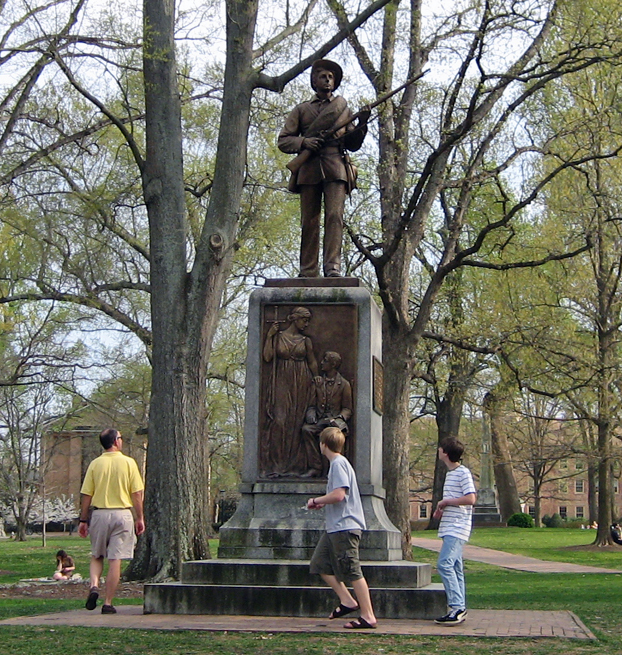It happened in the dead of the night. August, 2018. Ropes were pulled, bronze groaned and folded, and Silent Sam face-planted into the Carolina dirt, looking every bit like a Tar Heel dead.
It was exactly where he belonged, as do all symbols of racism, hatred, and oppression.
Fast forward to the following semester. The statue’s base, which once loomed on the upper quad, has finally vanished.
The fact that there is no trace of this tribute to Confederacy left on campus is certainly a reason to celebrate. Minority students can walk across campus and not have their steps slowed by the gaze of a bronze-eyed soldier, or by the glare off the plaque on the statue’s towering base.
But there’s also a reason to be somber, and it’s got everything to do with the way Silent Sam’s pedestal was finally removed.
It happened in the dead of the night. January, 2019. Carol Folt had organized this secret takedown during a time when she knew no protestors would be awake to make their objections heard.
And here lies the most shameful aspect of Sam’s story. When Carolina confronts racism, it drags its feet. It draws up solutions that are more sensitive to the feelings of the hardcore Southerners, offering the statue its own building with a personal (and expensive) security detail. University authorities, who set the precedent for dealing with racism, wait till the dead of the night to remove the statue’s base.
The message is clear: We deal with racism only when the students make it too inconvenient to ignore.
On top of that, the statue’s disappearance might not last. Folt didn’t wait for permission from the Board of Governors to take the pedestal down. The Board is now furious, declaring that the Chancellor needs to be out of the university by January 31. They cannot seem to hide the fact that they simply don’t care about the way monuments to racism affect students and faculty. In fact, they’re insulted by Folt’s move.
The underlying problem? Racist voices have power, and those who lean towards inclusivity cannot seem to call them out.
The drama keeps unfolding, and the root of the problem continues to fester. Does the university truly care about creating a safer environment for all students? Then it must acknowledge that the Chapel Hill community needs to take a good look at its approach to racism. It’s not enough to claim “we are not racist,” and then back down when there is a chance for a symbol of hatred to be removed in a lawful manner.
There needs to be more weight given to the voices of those who feel genuinely unsafe in Sam’s silent shadow, and not the overly-tender sensitivities of the Confederate legacy. Only then can we have a meaningful conversation on how to finish off Silent Sam’s story, once and for all.
